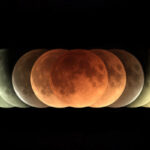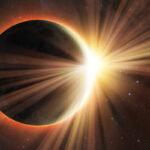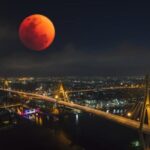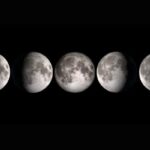We explain what a solar eclipse is and why this phenomenon occurs. Also, types of solar eclipse and precautions for seeing one.

What is a solar eclipse?
A solar eclipse is a phenomenon in which the Moon comes between the Sun and the Earth and can hide it completely, partially or completely depending on the size, location and distance between the stars.
On average, a solar eclipse It occurs every 18 months and lasts only a few minutes. The same total solar eclipse takes 400 years to repeat in the same place on the planet. This occurs because, like the movement of the Earth around the Sun, the Moon also moves on its elliptical orbit but around our planet.
By drawing an imaginary line that describes the translational movement of celestial bodies, it is seen that the path of the orbit is oval. Therefore, depending on the section of the route, the Moon is closer or further away from the Earth and these two, in turn, more or less close to the Sun. This is the reason why don't always line up in the same way or at the same time of year.
See also: Earth's translation
Why does a solar eclipse occur?
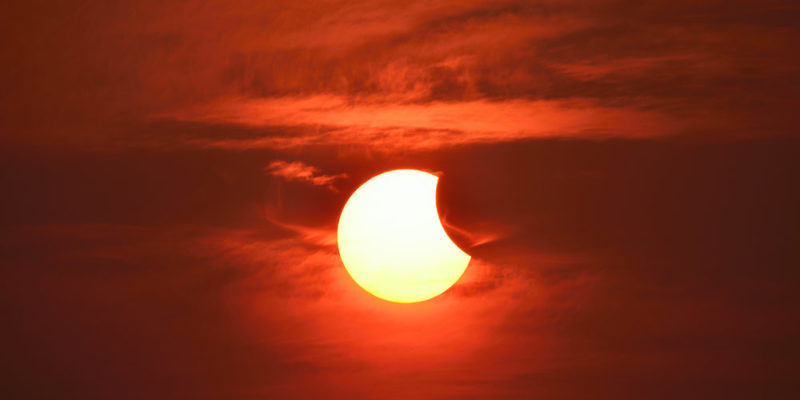
The translational movements of the Earth and its natural satellite (the Moon) imply variations in the intensity of the shadow that the Moon casts on the planet at the time of the solar eclipse. The closer the Moon is to the Earth, the more intense and smaller in diameter its shadow is. This is how the occultation of the Sun occurs, that is, a total eclipse is perceptible only from the area where the shadow is cast. From other nearby regions, where only the penumbra of the Moon reaches, the same phenomenon is perceived as a partial eclipse of the Sun.
To check this phenomenon in a simple way, you can hold a ball between a lamp and a wall. When you bring the ball closer to the lamp, the shadow it casts on the wall is larger and softer. As the ball moves closer to the wall, the shadow has a smaller diameter and is more intense.
If the ball were the Moon, the wall was the planet and the lamp was the Sun, by moving the ball the different instances of solar eclipses can be simulated.
Types of solar eclipse
- Total eclipse It can be seen only from a certain area of the planet, in the center of the shadow cast by the Moon on the Earth. From there, you can observe the total occultation of the luminous star.
- Partial eclipse A partial occultation of the Sun occurs and can be seen from the twilight zone of the Earth, generated by the shadow of the Moon. You can see the partially hidden luminous star and, at the same time, appreciate part of its luminosity in the shape of a crescent.
- Annular eclipse Unlike a partial eclipse, due to the distance between the Moon and the Earth, the satellite does not generate a shadow that completely hides the Sun but rather allows a ring of light to be seen around it.
Precautions for observing a solar eclipse

A solar eclipse should never be observed directly. Although it is a natural phenomenon, it is important to take precautions since direct and prolonged observation of the Sun, on a normal day or during an eclipse, can cause retinal burns and even permanent blindness. The radiation it emanates is very strong, capable of damaging eyesight in a very short time, especially in the little ones.
There are glasses designed to see an eclipse whose crystals have similar characteristics to those of welding masks. Despite viewing it through special glasses, it is not recommended to do so for more than 30 seconds at a time. The sunglasses that we use daily do not protect in these cases.
lunar eclipse

A lunar eclipse occurs When the Earth comes between the Sun and the Moon leaving the latter in darkness, totally or partially, without receiving the light of the luminous star.
The lunar eclipse can be seen in all terrestrial regions from where the satellite is visible while the total solar eclipse can only be seen from the area of the Earth where the Moon casts its shadow. It can last from 30 minutes to an hour, unlike the solar eclipse which lasts just a few minutes.
References
- “Solar Eclipse” in Geoencyclopedia.
- «Characteristics and Types of Eclipse» in ICarito.
- “Solar Eclipse and Lunar Eclipse” in The Solar System.
- «Types of Solar Eclipse» in My Solar System.
- “Solar Eclipse” in Wikipedia.

